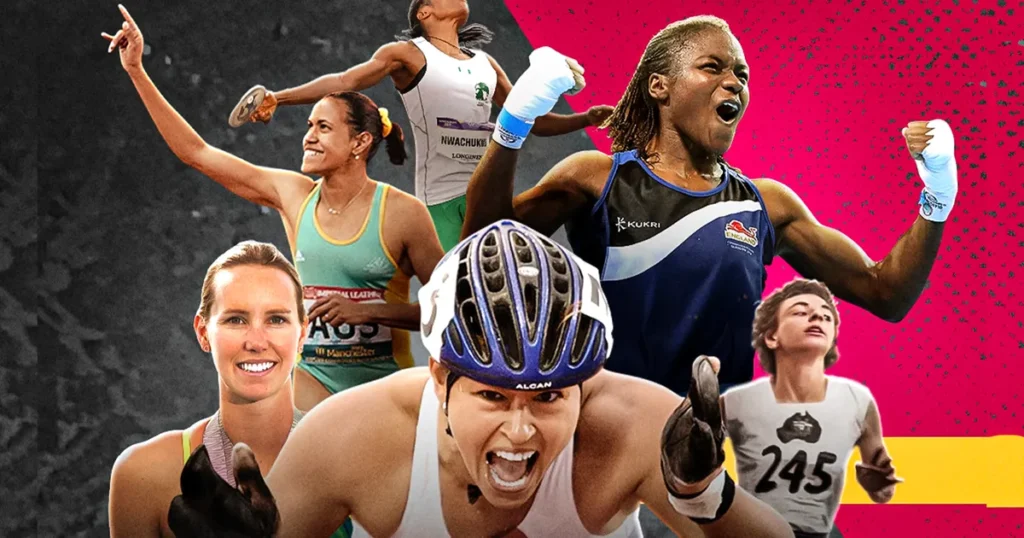
Table of Contents
Introduction
The landscape of sports has undergone a significant transformation in recent decades, particularly in Women Sports. Once marginalized and overshadowed, female athletes are now breaking barriers, setting records, and gaining recognition on a global scale. This article delves into the evolution of Women Sports, exploring the challenges faced, the achievements celebrated, and the future outlook for female athletes.
Historical Context
Women Sports have a rich but often overlooked history. From the early days of the 20th century, female athletes faced numerous obstacles, including societal norms and limited opportunities. The 1928 Amsterdam Olympics marked the first time women competed in track and field events, but it wasn’t until the 1960s and 70s that significant progress began. The passage of Title IX in the United States in 1972 was a pivotal moment, mandating equal funding and opportunities for women in education and athletics.
Breaking Barriers
In recent years, female athletes have shattered many of the barriers that once constrained them. The rise of professional women’s leagues in sports like soccer, basketball, and tennis has provided platforms for women to showcase their talent and compete at high levels. Athletes like Serena Williams, Megan Rapinoe, and Elana Meyers Taylor have become household names, demonstrating that women can excel in sports traditionally dominated by men.
The success of female athletes has also been evident in the increasing media coverage and sponsorship deals. Women Sports are receiving more attention than ever before, thanks in part to social media and the growing interest from fans and sponsors. This visibility is crucial for inspiring the next generation of female athletes and challenging outdated stereotypes.
Setting Records
Women in sports have not only broken barriers but have also set new records that continue to inspire. For instance, in the realm of track and field, Florence Griffith-Joyner’s 1988 world records in the 100 meters and 200 meters have yet to be surpassed. In soccer, the U.S. Women’s National Team has won four World Cups, a testament to their dominance in the sport. Additionally, Simone Biles’ unprecedented success in gymnastics, including her record number of World Championship medals, showcases the extraordinary talent of female athletes.
Challenges and Inequality
Despite the progress, female athletes still face significant challenges. Gender inequality remains a pressing issue, with disparities in pay, funding, and opportunities compared to their male counterparts. For instance, while the U.S. Women’s National Soccer Team has achieved remarkable success, their fight for equal pay with the men’s team highlights ongoing issues of gender disparity in sports.
Moreover, female athletes often encounter barriers related to gender stereotypes and media representation. Women Sports are frequently underrepresented in mainstream media, and when coverage does occur, it may reinforce traditional gender norms rather than highlighting the athletes’ achievements and skills. Addressing these challenges is essential for ensuring that women in sports receive the recognition and support they deserve.
The Role of Media and Technology
The rise of digital media and technology has played a crucial role in advancing Women Sports. Social media platforms like Instagram, Twitter, and TikTok have provided athletes with tools to connect with fans, share their stories, and promote their sports. Streaming services and online platforms have also increased the accessibility of Women Sports, allowing fans to watch games and events that might not have been covered by traditional media.
Additionally, the growing presence of Women Sports in mainstream media has contributed to a shift in perceptions. Documentaries, feature stories, and interviews have spotlighted the achievements and challenges of female athletes, fostering greater appreciation and support for Women Sports.
The Future of Women Sports
The future of Women Sports looks promising, with continued growth and progress on the horizon. Initiatives aimed at increasing opportunities for women and girls in sports, along with efforts to address gender disparities, are paving the way for a more inclusive and equitable landscape. Organizations, sponsors, and media outlets are increasingly recognizing the value of Women Sports and investing in their development.
Young female athletes are also making their mark, with increased participation and success at grassroots levels. The rise of female role models in sports nutrition is inspiring the next generation to pursue their athletic dreams and challenge the status quo. As societal attitudes continue to evolve, it is likely that Women Sports will continue to break new ground and achieve even greater heights.
Conclusion
The rise of Women Sports represents a significant cultural shift, marked by breaking barriers, setting records, and challenging traditional norms. While progress has been made, there is still work to be done to ensure that female athletes receive the recognition, opportunities, and support they deserve. By continuing to address gender inequality, promote media coverage, and invest in Women Sports, we can build on the achievements of the past and pave the way for a more inclusive and equitable future.
